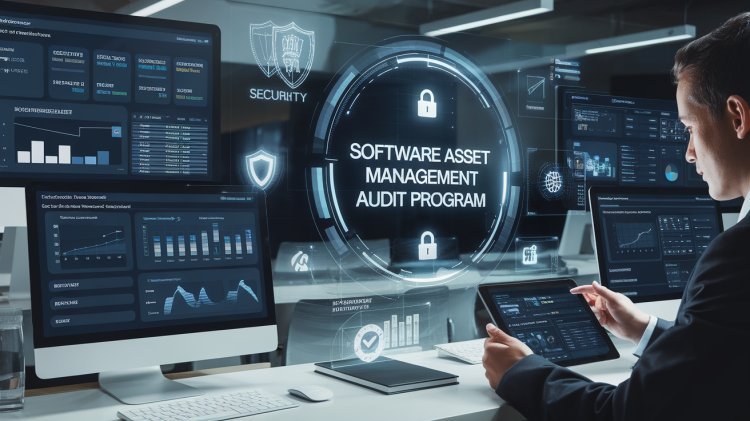Optimizing Software Assets: A Comprehensive Guide to Software Asset Management Audit Programs
Implement a robust Software Asset Management (SAM) audit program to optimize software usage, ensure compliance, reduce costs, and enhance security.

Organizations trying to maximize their software investments, guarantee compliance, and reduce security threats must have a strong Software Asset Management (SAM) audit program implemented. Apart from monitoring software assets, a well-organized SAM audit program is absolutely important for operational effectiveness and financial planning.
Understanding Software Asset Management (SAM)
Software asset management is the efficient control of software resources inside a company. This covers software license management, deployment, usage, vendor agreement compliance, A thorough SAM plan guarantees that companies make effective use of their software resources, steer clear of legal hotlines related to non-compliance, and cut needless waste on obsolete or duplicate systems.
Key Objectives of a SAM Audit Program
-
License Compliance: Ensuring that all software installations align with the organization's licensing agreements to prevent legal issues and financial penalties.
-
Asset Visibility: Maintaining an up-to-date inventory of all software assets to enhance transparency and control over the software environment.
-
Cost Optimization: Identifying underutilized or unused software to optimize license allocations and reduce unnecessary expenditures.
-
Security Enhancement: Detecting unauthorized or outdated software that may pose security vulnerabilities, thereby strengthening the organization's security posture.
Implementing an Effective SAM Audit Program
To establish a successful SAM audit program, organizations should consider the following steps:
-
Assemble a Competent SAM Team: Form a dedicated team responsible for overseeing software assets, comprising members from IT, finance, procurement, and legal departments.
-
Develop a Comprehensive Software Inventory: Utilize automated discovery tools to compile a detailed inventory of all software assets, including information on installations, versions, and licensing details.
-
Classify Software Assets: Organize software assets into categories such as critical, essential, and non-essential to prioritize management efforts and resource allocation.
-
Establish Clear Policies and Procedures: Define and document policies for software procurement, deployment, usage, and disposal to ensure consistent practices across the organization.
-
Conduct Regular Audits: Schedule periodic audits to assess compliance, identify discrepancies, and update the software inventory as needed.
-
Implement License Management Tools: Adopt specialized software tools designed to monitor license usage, track compliance, and provide alerts for any deviations.
-
Provide Training and Awareness: Educate employees about the importance of software compliance and the organization's SAM policies to foster a culture of accountability and adherence.
Request Your Free Demo & Experience the Future – https://axonator.com/request-for-demo/
Benefits of a Robust SAM Audit Program
Implementing a structured SAM audit program offers numerous advantages, including:
-
Financial Savings: By identifying and eliminating unused or redundant software, organizations can significantly reduce costs.
-
Enhanced Compliance: Regular audits ensure adherence to licensing agreements, minimizing the risk of legal disputes and associated penalties.
-
Improved Security: Monitoring software installations helps in detecting unauthorized or outdated applications that could serve as entry points for security breaches.
-
Operational Efficiency: A well-maintained software inventory streamlines IT operations, facilitating quicker decision-making and resource allocation.
A proactive approach to Software Asset Management is absolutely essential in the fast changing technology scene of today. Implementing a thorough SAM audit program helps companies to guarantee compliance, maximize their software assets, and strengthen their whole security structure. Investing in SAM helps the company to be financially and operationally successful in addition to protecting it from possible hazards.
What's Your Reaction?















